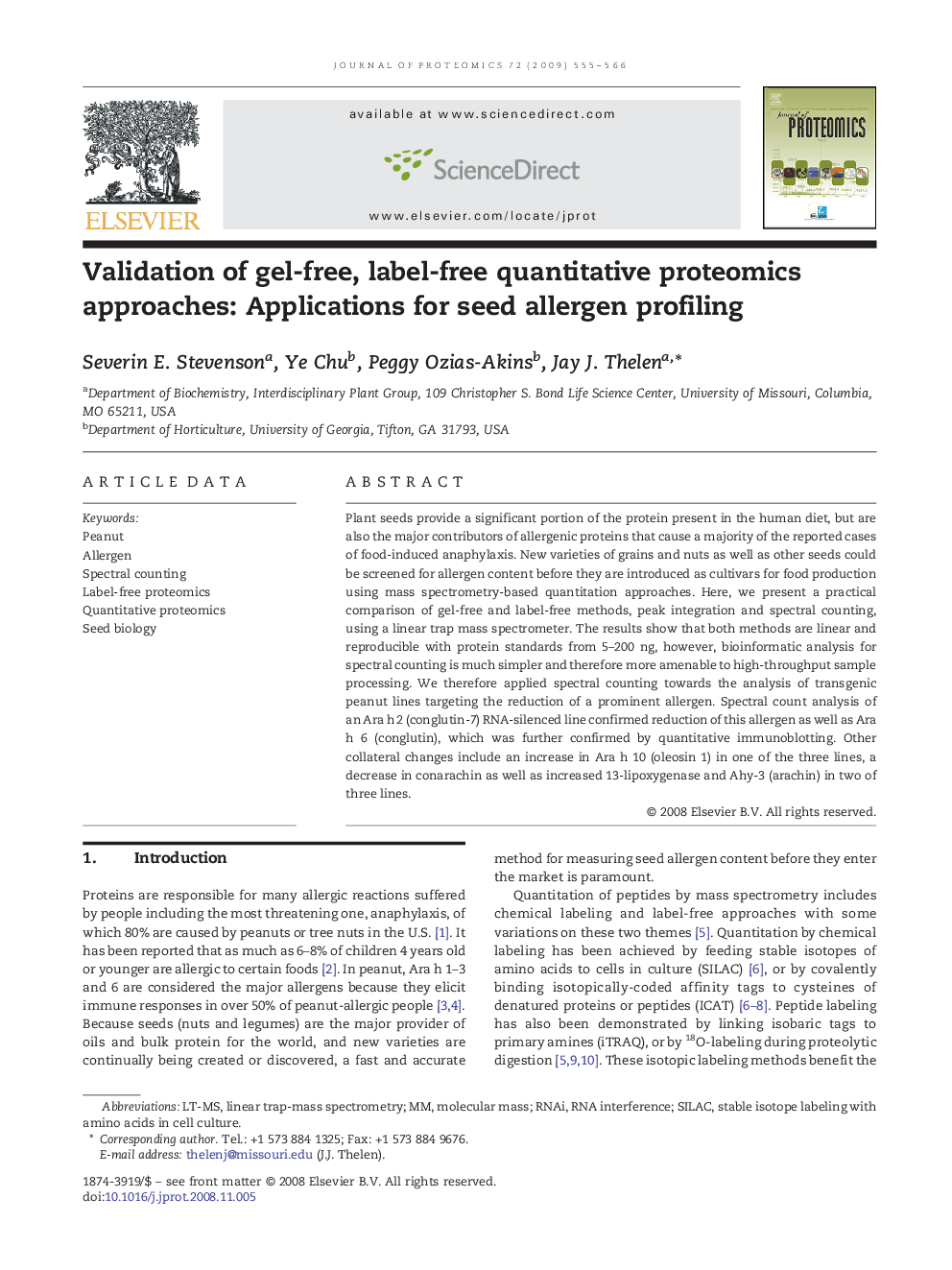| Article ID | Journal | Published Year | Pages | File Type |
|---|---|---|---|---|
| 1226932 | Journal of Proteomics | 2009 | 12 Pages |
Plant seeds provide a significant portion of the protein present in the human diet, but are also the major contributors of allergenic proteins that cause a majority of the reported cases of food-induced anaphylaxis. New varieties of grains and nuts as well as other seeds could be screened for allergen content before they are introduced as cultivars for food production using mass spectrometry-based quantitation approaches. Here, we present a practical comparison of gel-free and label-free methods, peak integration and spectral counting, using a linear trap mass spectrometer. The results show that both methods are linear and reproducible with protein standards from 5–200 ng, however, bioinformatic analysis for spectral counting is much simpler and therefore more amenable to high-throughput sample processing. We therefore applied spectral counting towards the analysis of transgenic peanut lines targeting the reduction of a prominent allergen. Spectral count analysis of an Ara h 2 (conglutin-7) RNA-silenced line confirmed reduction of this allergen as well as Ara h 6 (conglutin), which was further confirmed by quantitative immunoblotting. Other collateral changes include an increase in Ara h 10 (oleosin 1) in one of the three lines, a decrease in conarachin as well as increased 13-lipoxygenase and Ahy-3 (arachin) in two of three lines.
